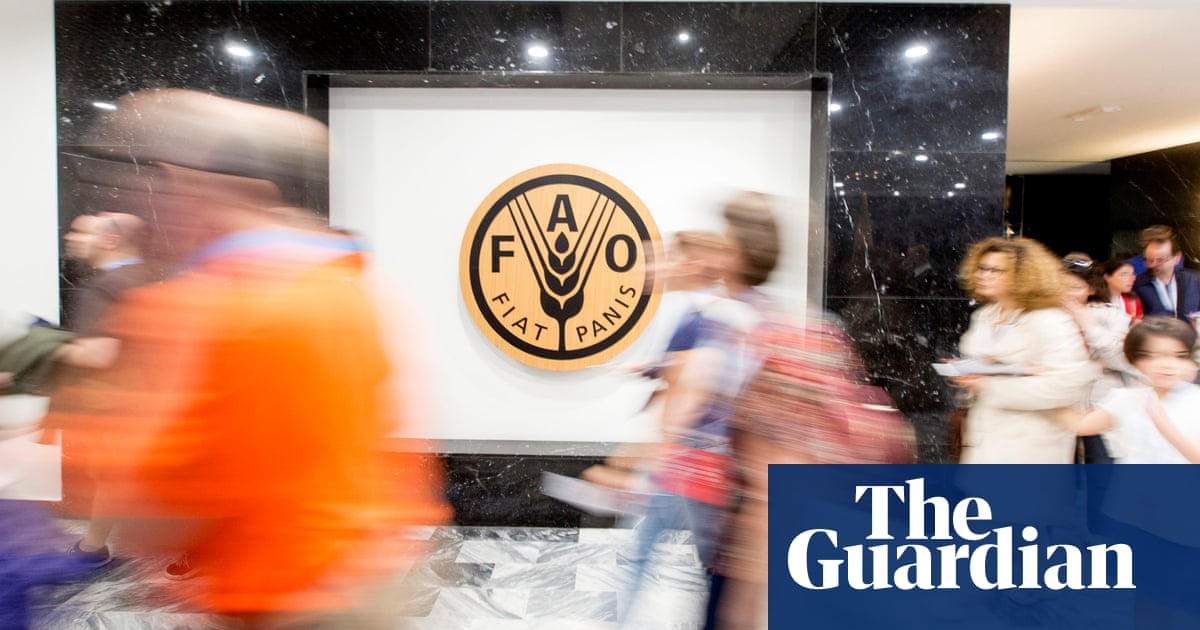‘The anti-livestock people are a pest’: how UN food body played down role of farming in climate change
‘The anti-livestock people are a pest’: how UN food body played down role of farming in climate change The Guardian


The FAO’s Battle with Livestock Emissions: A Report on the Challenges Faced

Introduction
In 2006, the UN Food and Agriculture Organization (FAO) released a groundbreaking report titled “Livestock’s Long Shadow” that analyzed the link between livestock and climate change. This report, which estimated that livestock were responsible for 18% of global greenhouse gas emissions, including significant contributions to CO2, methane, nitrous oxides, and ammonia emissions, sent shockwaves through the meat industry and faced intense backlash. This article explores the challenges faced by the FAO in addressing livestock emissions and highlights the resistance and censorship experienced by officials involved in this research.
The Ignored Connection: Climate Change and Livestock
While climate change discussions focused primarily on fossil fuels, the livestock sector managed to evade scrutiny. Scientists were aware of the methane emissions produced by grazing cattle, but there was no comprehensive analysis of the sector’s environmental impact. The FAO, initially established to increase agricultural and livestock production, was hesitant to scrutinize the industry it represented.
The Explosive Release of “Livestock’s Long Shadow”
When the “Livestock’s Long Shadow” report was finally published, it caused a storm of controversy. Environmental scientists and campaign groups praised the report, but the meat industry and meat-producing countries expressed strong opposition. The FAO faced pressure from all sides, including threats and accusations of bias. The report’s authors and researchers experienced censorship, sabotage, and victimization.
The Battle to Publish Accurate Figures
The FAO’s estimates of livestock emissions have faced criticism and revision over the years. The initial 18% figure was revised downwards to 14.5% in a follow-up report and is now being revised again to approximately 11.2%. Some scientists argue that these figures underestimate the true impact of livestock emissions due to the use of modeling rather than verifiable monitoring data. The FAO denies any pressure from agribusiness or states in influencing their estimates.
The Influence of Agribusiness Lobby
Former FAO officials and consultants reveal the significant influence of the agribusiness lobby on the organization’s policies. They compare this influence to that of oil and gas giants on energy policies. The lobby sought to control the narrative on livestock emissions and funded industry-friendly research to shape the scientific consensus. The FAO leadership was accused of obstructing efforts to address environmental impacts and undermining initiatives such as the Global Agenda for Sustainable Livestock.
The FAO’s Thin Line on Livestock Emissions
The FAO, as the global authority on agriculture, faces challenges in addressing livestock emissions. Politicians are reluctant to tackle the issue due to cultural and economic factors. Reducing meat and dairy consumption is proven to be an effective way to reduce emissions, but governments hesitate to include this in their environmental messaging. The FAO’s involvement in climate summits and its ability to incorporate the farming sector remains limited.
The Need for Honest Examination of Agriculture’s Role
The FAO’s battle with livestock emissions highlights the need for an honest examination of agriculture’s role in climate change. The influence of the meat industry lobby and the reluctance of policymakers to address the issue hinder progress in reducing emissions. The FAO must navigate these challenges while striving for transparency and accurate data in its reports.
SDGs, Targets, and Indicators
1. Which SDGs are addressed or connected to the issues highlighted in the article?
- SDG 13: Climate Action
- SDG 15: Life on Land
- SDG 12: Responsible Consumption and Production
2. What specific targets under those SDGs can be identified based on the article’s content?
- SDG 13.2: Integrate climate change measures into national policies, strategies, and planning.
- SDG 15.5: Take urgent and significant action to reduce the degradation of natural habitats, halt the loss of biodiversity, and protect and prevent the extinction of threatened species.
- SDG 12.5: By 2030, substantially reduce waste generation through prevention, reduction, recycling, and reuse.
3. Are there any indicators mentioned or implied in the article that can be used to measure progress towards the identified targets?
Yes, the article mentions indicators that can be used to measure progress towards the identified targets. These include:
- Greenhouse gas emissions from livestock
- Percentage of global greenhouse gas emissions attributed to livestock
- Reduction in livestock emissions
- Reduction in meat and dairy consumption
- Reduction in waste generation from livestock production
Table: SDGs, Targets, and Indicators
| SDGs | Targets | Indicators |
|---|---|---|
| SDG 13: Climate Action | Target 13.2: Integrate climate change measures into national policies, strategies, and planning. | Indicator: Greenhouse gas emissions from livestock |
| SDG 15: Life on Land | Target 15.5: Take urgent and significant action to reduce the degradation of natural habitats, halt the loss of biodiversity, and protect and prevent the extinction of threatened species. | Indicator: Percentage of global greenhouse gas emissions attributed to livestock |
| SDG 12: Responsible Consumption and Production | Target 12.5: By 2030, substantially reduce waste generation through prevention, reduction, recycling, and reuse. | Indicators: Reduction in livestock emissions, reduction in meat and dairy consumption, reduction in waste generation from livestock production |
Behold! This splendid article springs forth from the wellspring of knowledge, shaped by a wondrous proprietary AI technology that delved into a vast ocean of data, illuminating the path towards the Sustainable Development Goals. Remember that all rights are reserved by SDG Investors LLC, empowering us to champion progress together.
Source: theguardian.com

Join us, as fellow seekers of change, on a transformative journey at https://sdgtalks.ai/welcome, where you can become a member and actively contribute to shaping a brighter future.







